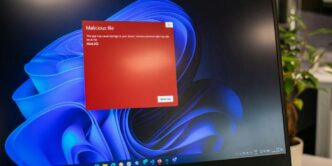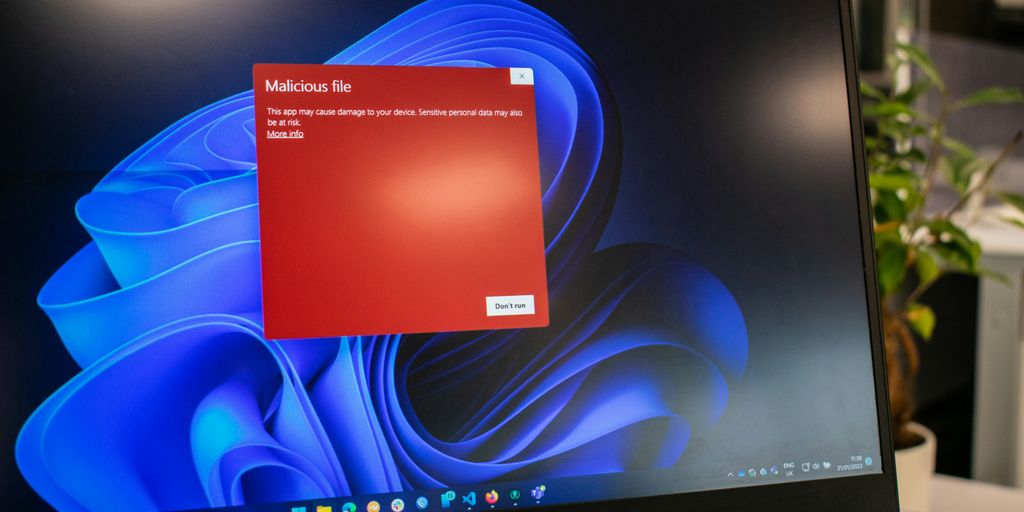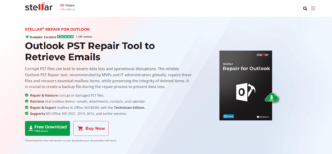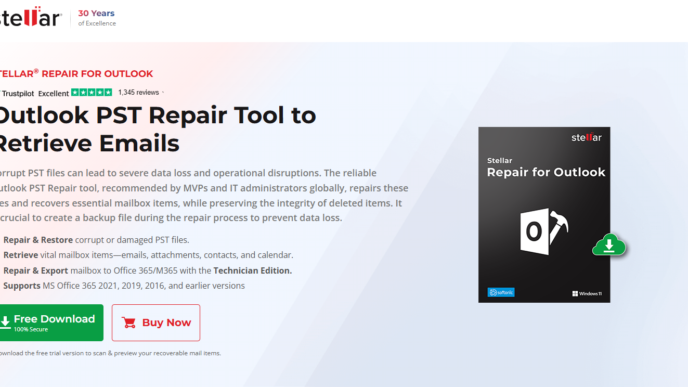It’s May 2025, and that means it’s time for another Patch Tuesday. Microsoft just rolled out a bunch of security updates, and some of them are pretty important. We’re talking about fixes for things that bad guys are already using to cause trouble. So, if you’ve got Windows or other Microsoft stuff, you’ll want to pay attention to what’s new this month.
Key Takeaways
- Microsoft dropped 72 security fixes this Patch Tuesday, May 2025, including some for issues already being used by attackers.
- Five of the vulnerabilities patched were ‘zero-days,’ meaning they were being exploited before Microsoft even knew about them.
- A bunch of the fixes deal with privilege escalation, which is when an attacker gets higher-level access to a system than they should have.
- There are also important updates for remote code execution flaws, especially in things like Windows Hyper-V and Microsoft Office.
- Everyone, from big companies to regular folks, needs to get these updates installed quickly to stay safe from these threats.
Critical Zero-Day Vulnerabilities Addressed in Patch Tuesday May 2025

This month’s Patch Tuesday is a big one, folks. We’re talking about some serious zero-day vulnerabilities that are already being exploited in the wild. That means bad actors are actively using these flaws to cause damage, so patching ASAP is not optional. Let’s break down the critical issues you need to know about.
Elevation of Privilege Flaws in DWM Core Library
First up, we have CVE-2025-30400, an elevation of privilege vulnerability in the Microsoft DWM Core Library. If someone manages to exploit this, they can gain SYSTEM-level privileges on your machine. This is as bad as it sounds. An attacker with SYSTEM access can pretty much do anything they want. Make sure you get this patch applied quickly.
Windows Common Log File System Driver Exploits
Next, we’ve got a couple of elevation of privilege vulnerabilities in the Windows Common Log File System (CLFS) driver: CVE-2025-32701 and CVE-2025-32706. Just like the DWM Core Library flaw, these can allow an attacker to gain SYSTEM-level access. It seems like attackers are really focusing on privilege escalation this month. Securing your cybersecurity jobs is important.
Immediate Action Required for Zero-Day Threats
These zero-day vulnerabilities are not something to take lightly. Here’s why you need to act fast:
- Active Exploitation: These flaws are already being used in attacks.
- High Impact: Successful exploitation leads to SYSTEM-level privileges.
- Wide Reach: These vulnerabilities affect a broad range of Windows systems.
Basically, if you don’t patch, you’re leaving the door wide open for attackers. Prioritize these updates and get them deployed as soon as possible. Don’t wait for something bad to happen before you take action.
Comprehensive Overview of May 2025 Security Updates
Microsoft rolled out its May 2025 Patch Tuesday updates, a hefty package addressing a total of 72 vulnerabilities. This includes fixes for five actively exploited zero-day flaws and two publicly disclosed vulnerabilities. Six of these are rated as Critical, with five being remote code execution (RCE) issues and one an information disclosure flaw. It’s important to note that these updates don’t include the earlier fixes for Microsoft Edge, Azure, Dataverse, and Mariner platforms.
Breakdown of Vulnerability Categories
The May 2025 Patch Tuesday update addresses a wide range of vulnerability types. Here’s a quick rundown:
- Elevation of Privilege Vulnerabilities: 17
- Security Feature Bypass Vulnerabilities: 2
- Remote Code Execution Vulnerabilities: 28
- Information Disclosure Vulnerabilities: 15
- Denial of Service Vulnerability: 7
- Spoofing Vulnerabilities: 2
This diverse set of fixes highlights the ongoing need for vigilance and proactive patching.
Key Fixes for Windows 10 and 11
Microsoft has released specific updates for Windows 10 and 11 (KB5058379, KB5058411, KB5058405). These updates are crucial for maintaining the security posture of these widely used operating systems. It’s recommended that users apply these patches as soon as possible to mitigate potential risks. Keeping your OS up-to-date is a basic, but important, step in cyber hygiene.
Beyond Zero-Days: Publicly Disclosed Vulnerabilities
While the zero-day vulnerabilities understandably grab headlines, it’s important not to overlook the publicly disclosed vulnerabilities also addressed in this update. These flaws, while not actively exploited (yet), represent a significant risk because the details are already available. Attackers can reverse engineer the patches to develop exploits, making timely patching even more critical. Ignoring these vulnerabilities could leave systems exposed to future attacks. Here’s a reminder of what was patched:
- CVE-2025-30400 – Microsoft DWM Core Library Elevation of Privilege Vulnerability
- CVE-2025-32701 – Windows Common Log File System Driver Elevation of Privilege Vulnerability
- CVE-2025-32706 – Windows Common Log File System Driver Elevation of Privilege Vulnerability
- CVE-2025-32709 – Windows Ancillary Function Driver for WinSock Elevation of Privilege Vulnerability
High-Severity Remote Code Execution Patches
This month’s Patch Tuesday includes fixes for some pretty nasty remote code execution (RCE) vulnerabilities. These are the kind of flaws that can let an attacker run code on your system without you even knowing it. It’s like leaving the front door wide open for cybercriminals.
Mitigating Risks in Windows KDC Proxy Service
One of the more concerning RCE vulnerabilities is in the Windows KDC Proxy Service (CVE-2025-49735, CVSS score: 8.1). What makes this one stand out is that it’s network-facing and doesn’t require any special privileges or user interaction. That means an attacker could potentially compromise a system remotely without needing to log in or trick someone into clicking a link. Ben McCarthy, a Lead Cyber Security Engineer, mentioned that while the attack complexity is high due to a race condition, it’s still a significant risk, especially for advanced persistent threats (APTs) and nation-state actors. It’s one of those things where, even if it’s hard to exploit now, attackers will likely find ways to weaponize it later.
Addressing Vulnerabilities in Windows Hyper-V
Another critical area of focus is the patch for Windows Hyper-V (CVE-2025-48822, CVSS score: 8.6). Hyper-V is a virtualization platform, so a vulnerability here could potentially allow an attacker to break out of a virtual machine and access the host system or other VMs. That’s obviously a huge problem for anyone using Hyper-V for server virtualization or development.
Critical Updates for Microsoft Office Applications
Don’t forget about Microsoft Office! There are several RCE vulnerabilities patched this month (CVE-2025-49695, CVE-2025-496966, and CVE-2025-49697, CVSS scores: 8.4). These flaws could allow an attacker to run malicious code simply by getting a user to open a specially crafted Office document. Given how often people use Word, Excel, and PowerPoint, these are high-priority patches. It’s a good reminder to be careful about opening attachments from unknown senders, but even that might not be enough if there’s a zero-day exploit in the wild.
Important Security Feature Bypass Resolutions
This month’s Patch Tuesday addresses some sneaky security feature bypasses that could leave your system vulnerable. It’s not always about flashy remote code execution; sometimes, it’s about attackers finding ways around the protections you already have in place. Let’s break down what’s been fixed.
Bitlocker Security Enhancements
Bitlocker is a key tool for protecting data at rest, but like any security measure, it’s not infallible. This month, Microsoft patched several security feature bypasses in Bitlocker (CVE-2025-48001, CVE-2025-48003, and others). These flaws could potentially allow an attacker to gain access to encrypted data without proper authorization. It’s a good idea to apply these updates quickly to keep your drives secure. Think of it like adding an extra deadbolt to your front door – it just makes things harder for the bad guys.
Protecting Against Credential Theft
Credential theft is a constant threat, and attackers are always looking for new ways to steal usernames and passwords. This Patch Tuesday includes fixes that help protect against certain credential theft techniques. While the specifics are often kept under wraps to avoid giving attackers a roadmap, the general idea is to close loopholes that could be exploited to gain unauthorized access to user credentials. Keeping your systems updated is a simple way to improve your overall security posture.
Strengthening System Defenses
Beyond Bitlocker and credential protection, this month’s updates include a range of fixes designed to strengthen overall system defenses. These might address vulnerabilities that could be chained together to bypass security features or prevent attackers from moving laterally within a network. It’s all about making it harder for attackers to achieve their goals, even if they manage to get a foot in the door. Think of it as adding layers of security – the more layers, the better.
Strategic Importance of Patch Tuesday May 2025
Proactive Defense Against Active Exploitation
Patch Tuesday in May 2025 is a big deal because it’s all about stopping problems before they start. We’re talking about actively exploited vulnerabilities – the kind hackers are already using to cause trouble. Applying these patches is like putting up a shield against known attacks. It’s not just about fixing things; it’s about preventing breaches and keeping systems secure. Think of it as preventative maintenance for your digital life. The security advisory is a must-read.
Minimizing Attack Surface for Malicious Actors
Every unpatched vulnerability is like an open door for cybercriminals. Patch Tuesday shrinks the attack surface, making it harder for bad actors to find a way in. It’s about reducing the number of potential entry points. The more vulnerabilities you patch, the fewer opportunities attackers have. It’s a constant game of cat and mouse, and Patch Tuesday helps you stay one step ahead. Here’s a quick look at the impact:
- Reduced risk of malware infections
- Fewer opportunities for data breaches
- Improved overall system security
Ensuring System Integrity and Data Protection
At the end of the day, Patch Tuesday is about keeping your systems running smoothly and protecting your data. It’s about ensuring that your data remains confidential, that your systems are available when you need them, and that the integrity of your data is maintained. It’s a fundamental part of any good security strategy. Neglecting these updates can lead to serious consequences, including data loss, system downtime, and reputational damage. Make sure you check out the latest security patches ASAP.
Recommendations for System Administrators
Prioritizing Patch Deployment and Testing
Okay, so Patch Tuesday May 2025 is here, and it’s a big one. Don’t just blindly roll out these updates. Testing is key. I know, I know, it takes time, but think of the headaches you’ll save if you catch a compatibility issue before it takes down half your network. Set up a test environment that mirrors your production setup as closely as possible. This way, you can see how the patches play with your existing software and hardware. Consider a phased rollout, starting with a small group of users before unleashing it on everyone. This gives you a chance to monitor for problems and pull the plug if needed.
Leveraging Microsoft Update Guide Resources
Microsoft actually provides a ton of info to help you out. The Microsoft Update Guide is your friend. Seriously, get familiar with it. It’s got details on each patch, including what it fixes, potential side effects, and known issues. Use it to prioritize which patches to deploy first. Focus on the ones that address actively exploited vulnerabilities or those that pose the biggest risk to your organization. Also, keep an eye on the CVE details for each patch. This will give you a better understanding of the vulnerability and its potential impact.
Continuous Monitoring and Threat Intelligence
Patching is not a "set it and forget it" kind of thing. You need to keep an eye on your systems after deploying updates. Look for any unusual behavior, performance issues, or error messages. Use your security tools to monitor for signs of exploitation. Also, stay up-to-date on the latest threat intelligence. Knowing what attacks are out there helps you prioritize your patching efforts and identify potential risks. Consider subscribing to threat feeds or joining security communities to stay informed. Here’s a simple checklist to keep in mind:
- Regularly check for new vulnerabilities.
- Monitor security blogs and forums.
- Implement intrusion detection systems.
Impact on Enterprise and Individual Users
Safeguarding Against Privilege Escalation
Okay, so, privilege escalation. It’s a big deal, right? Imagine someone getting into your system and suddenly having the keys to the kingdom. Not good. This Patch Tuesday, May 2025, a bunch of fixes are aimed directly at stopping that. For enterprises, this means protecting sensitive data and critical systems from internal threats or external attackers who manage to get a foothold. For individual users, it means keeping your personal info safe and preventing malware from taking over your computer. Think of it like locking all the doors and windows in your house – you’re just making it harder for bad stuff to happen.
Preventing Information Disclosure
Information disclosure vulnerabilities are sneaky. They’re like leaving a file cabinet unlocked with all your secrets inside. These patches address flaws that could allow attackers to access sensitive information they shouldn’t see. For businesses, this could be anything from customer data to trade secrets. For individuals, it’s your passwords, bank details, personal photos – the stuff you definitely don’t want floating around. The May 2025 updates include fixes that close these loopholes, helping to keep your data under wraps. It’s about maintaining confidentiality and avoiding potential identity theft or data breaches.
Maintaining Operational Continuity
Let’s face it, nobody likes downtime. Whether you’re a huge corporation or just trying to stream a movie on your laptop, interruptions are annoying. Security vulnerabilities can lead to system crashes, data corruption, and all sorts of other problems that bring things to a halt. Patching these vulnerabilities is like doing preventative maintenance on your car – it helps keep things running smoothly. By applying the May 2025 updates, organizations can reduce the risk of disruptions and keep their operations humming along. Individuals can avoid the frustration of dealing with a compromised system and the potential loss of important files. Think of it as an investment in crisis protection fixes for your digital life.
Here’s a quick rundown of why this matters:
- Reduced Risk: Fewer vulnerabilities mean fewer ways for attackers to get in.
- Improved Stability: Patches often fix bugs that can cause crashes or other issues.
- Peace of Mind: Knowing your systems are up-to-date can help you sleep better at night.
Wrapping Things Up: What May 2025 Patch Tuesday Means for You
So, that’s the rundown for May 2025’s Patch Tuesday. We saw a bunch of fixes, including those five zero-day issues that were already out there causing trouble. It just goes to show that keeping your systems updated isn’t just a good idea, it’s really important. Ignoring these updates can leave you wide open to attacks, and nobody wants that. Make sure you’re getting these patches installed as soon as you can. Staying on top of these things is how you keep your stuff safe from the bad guys.
Frequently Asked Questions
What are ‘zero-day’ vulnerabilities?
These are serious security holes that hackers are already using to break into computer systems. They need to be fixed right away to keep your information safe.
What is Patch Tuesday?
Patch Tuesday is when Microsoft releases important updates to fix security problems in its software. It happens once a month.
How many security problems did Microsoft fix in May 2025?
Microsoft found 72 problems, including five ‘zero-day’ issues that hackers are actively using. There were also two other problems that people knew about publicly before the fix.
What kind of problems were fixed this month?
Many of the fixes are for problems that could let someone take control of your computer from far away, or get higher-level access than they should have.
Why is it important to install these updates?
It’s super important to install these updates quickly. They protect your computer from bad guys who want to steal your data or mess up your system.
How do I get these updates?
You can usually get these updates through your computer’s automatic update settings, or by visiting Microsoft’s official update guide website.














